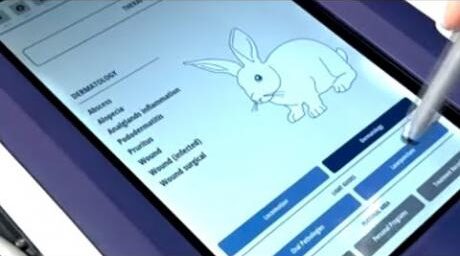Over the past few years, the veterinary industry has been transformed: COVID-19, increased number of patients, staff shortages, and burnout have led to new challenges that the industry continues to face. These challenges are forcing veterinary clinics to find new ways to adapt to best serve their patients, increase productivity, and alleviate staff burnout.
Increased Pet Adoption and Staff Shortages
During the height of the COVID-19 pandemic pet adoptions increased in the U.S. by record number. In the past 2 years approximately 1 in 5 households acquired a cat or dog.[i] With an increased number of people adopting cats and dogs, there is also an increased need for veterinary care.[ii] However, the number of veterinary staffers has not increased enough to keep up with demand, leading to drastic shortages, and drastic measures. Vet offices, clinics, and hospitals have been forced to turn away animals in need of care due to staffing shortages. Some 24-hour hospitals have been forced to reduce their hours. Even during the day, receiving emergency care at veterinary hospitals is not guaranteed.[iii]
Staff Burnout and Low Wages
There are many factors that lead to staffing shortages. 40% of practitioners who graduated within past 10 years are considering leaving the profession, citing work-life balance and mental health as top reasons.[iv] Lack of proper mental healthcare and work-life balance are both areas that can lead to burnout. Low wages also contribute to staff shortages and burnout, with veterinary technicians often being underpaid.[v] Large sign-on bonuses meant to lure in employees are not a sure solution but could alleviate some employee stressors related to student debt and perceived social standing.[vi]
Continued Challenges
The challenges facing the veterinary industry are not going away anytime soon. It is estimated that the pet space will triple in the next 10 years, with the U.S. Bureau of Labor forecasting a 17% growth in veterinary industry jobs. However, Animal Health Economics predicts that will be a shortfall of 15,000 veterinarians by 2030.[vii] With the possibility of long-term staff shortages, it is important to consider new and innovative ways to best utilize technology to increase productivity.
Utilizing Technology
One trend that could help with staffing shortages and improve patient and owner satisfaction is a shift to utilizing technology. Many younger pet owners tend to favor more holistic treatment methods for their pets. One of the holistic treatments gaining popularity is laser therapy which can help reduce pain and inflammation.[viii] Therapy lasers can be operated by veterinary technicians, allowing veterinarians to focus on surgeries and other services requiring their expertise. This allows practices to better allocate their staffing resources to fit their needs.
Performing laser therapy treatments can help give veterinary technicians a sense of pride as they are able to help animals relax and feel better. It can also give technicians a sense of purpose within the practice and allow them a moment to step away from the sometimes more mundane activities such as blood tests.
While therapy lasers can help increase morale among veterinary technicians, surgical lasers can help improve practice efficiency. Many procedures can be performed quicker with a surgical laser due to less bleeding, and therefore less time spent cleaning blood during the procedure itself. This can help improve efficiency and use of the doctor’s time. Overall, utilizing surgical lasers leads to fewer complications and quicker recovery times compared to traditional surgical methods.[ix]
Continuing to keep up with technological advancements is key to improving efficiency, quality of care, as well as patient, owner, and practitioner satisfaction.



